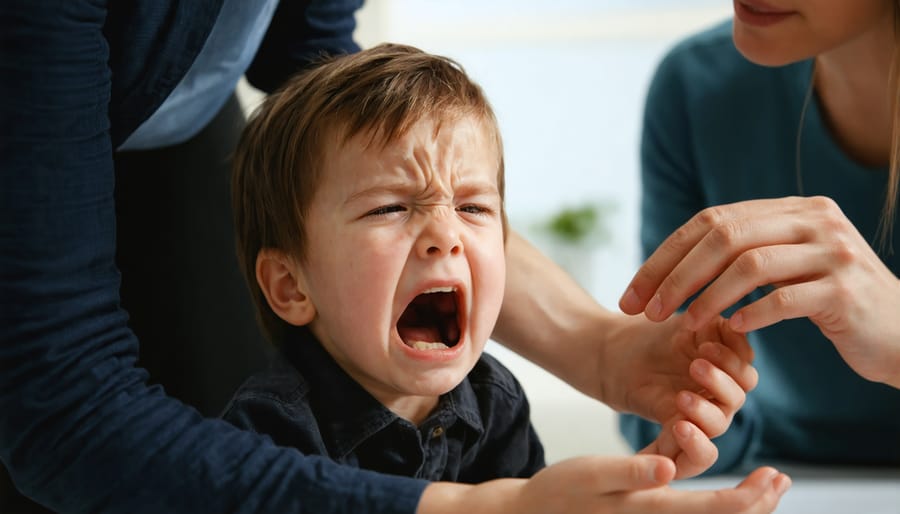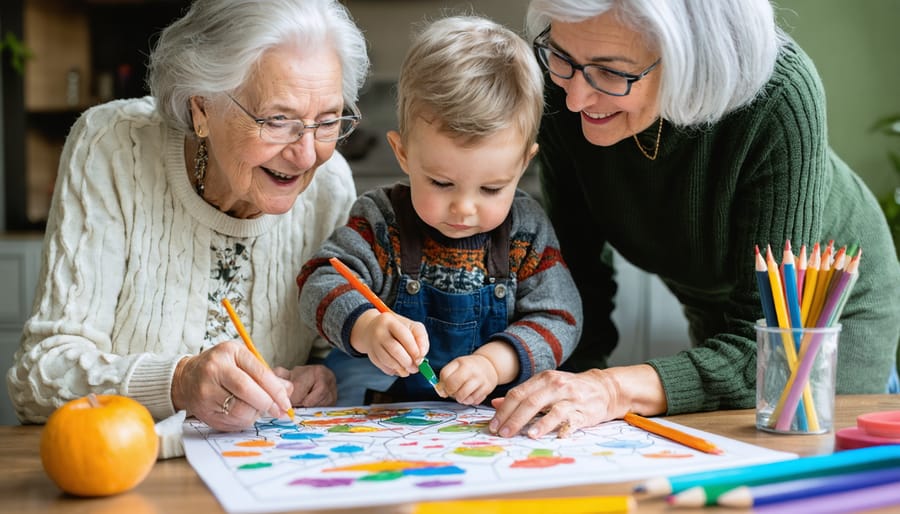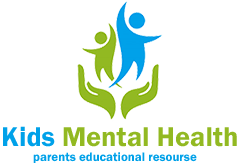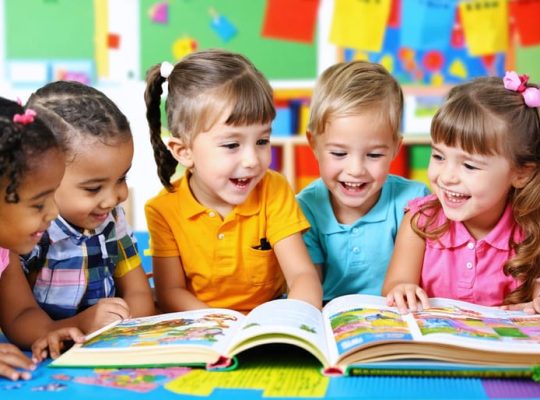The weight of historical trauma ripples through generations, shaping a child’s mental health development in profound and often invisible ways. From the Holocaust survivor’s grandchild experiencing unexplained anxiety to the descendants of colonial violence carrying unspoken fears, intergenerational trauma manifests in patterns we’re only beginning to understand.
Recent research reveals how trauma can be passed down not just through learned behaviors and family dynamics, but through actual biological changes in our DNA. This groundbreaking discovery helps explain why children of trauma survivors often struggle with stress responses, emotional regulation, and mental health challenges – even without directly experiencing the original traumatic events.
As parents, educators, and healthcare providers, recognizing these inherited patterns is our first step toward breaking the cycle. While the impact of generational trauma can feel overwhelming, modern therapeutic approaches offer hope and healing. Through informed, compassionate intervention, we can help children process their inherited emotional legacy while building resilience for future generations.
Our understanding of intergenerational trauma has evolved from abstract theory to actionable science, opening new pathways for healing that honor both past struggles and future possibilities. Together, we can transform historical pain into opportunities for growth, awareness, and positive change.
Understanding Intergenerational Trauma

How Trauma Gets Passed Down
Recent research has revealed fascinating insights into how trauma can be passed from one generation to the next. This transmission happens through both biological and psychological pathways, showing how deeply our experiences can affect our children and grandchildren.
On a biological level, trauma can actually influence how our genes express themselves through a process called epigenetics. When someone experiences severe stress or trauma, it can create chemical changes that affect how their genes function, and these modifications can be inherited by their children. Think of it like a dimmer switch that turns certain genes up or down, affecting how future generations respond to stress.
Psychologically, trauma patterns often continue through learned behaviors and parenting styles. For example, a parent who experienced childhood trauma might struggle with emotional regulation, inadvertently passing these coping mechanisms to their children. Children naturally pick up on their parents’ stress responses, anxiety patterns, and ways of dealing with difficult situations.
Family stories, beliefs, and unspoken rules about dealing with hardship also play a crucial role in this transmission. Even when parents try to protect their children from their past trauma, the impact can show up in subtle ways through family dynamics and communication patterns.
Common Sources of Generational Trauma
Historical events and family experiences can create ripples of trauma that flow through generations. War, displacement, and natural disasters often leave deep emotional scars that parents may unknowingly pass to their children. For example, families who lived through the Holocaust, Native American genocide, or slavery continue to experience the psychological impact of these events generations later.
Family patterns of abuse, addiction, or emotional neglect can also perpetuate trauma across generations. When parents haven’t processed their own traumatic experiences, they may struggle to provide emotional security for their children. As Dr. Sarah Martinez, a trauma specialist, explains, “Parents might adopt protective behaviors that actually transfer their fears and anxieties to their children.”
Cultural experiences of discrimination, poverty, and systemic oppression can create ongoing sources of trauma. Communities facing persistent racism or religious persecution often develop collective trauma responses that influence child-rearing practices and family dynamics.
The immigration experience can be another significant source, as families navigate cultural displacement, language barriers, and the loss of support systems. Even positive transitions, like seeking better opportunities, can carry hidden emotional costs that affect multiple generations.
Signs of Inherited Trauma in Children

Emotional Signs
Children affected by intergenerational trauma often display distinct emotional patterns that can impact their social and cultural development. These emotional signs may appear subtle at first but can become more pronounced over time.
Common emotional manifestations include unexplained anxiety, particularly in situations that seem safe to others. Children might show an heightened startle response or become overwhelmed by seemingly minor changes in their environment. Many experience difficulty forming secure attachments, showing either excessive clinginess or unusual emotional distance from caregivers.
Parents and teachers often notice these children struggling with emotional regulation. They may have intense reactions to stress, difficulty calming down after upsets, or show persistent sadness that seems disproportionate to their current circumstances. Some children might express feelings of guilt or shame without clear cause, as if carrying emotional burdens from previous generations.
Fear and hypervigilance are frequently observed, even in safe environments. Children might constantly scan their surroundings for danger or have trouble relaxing in social settings. They may also show signs of low self-esteem or struggle with identity issues, particularly when processing their family’s historical experiences.
It’s important to remember that these emotional responses are normal reactions to inherited trauma, and with proper support and understanding, children can develop healthy emotional coping strategies.
Behavioral Patterns
Children who carry intergenerational trauma often display distinct behavioral patterns that manifest in various ways throughout their development. Many exhibit heightened anxiety and startle responses, even in seemingly safe situations. Parents and educators frequently notice these children being hypervigilant, constantly scanning their environment for potential threats.
Some children might show unusual attachment patterns, either becoming overly clingy or displaying difficulty forming close relationships. They may struggle with trust and demonstrate resistance to authority figures, stemming from their family’s historical experiences with institutional harm or betrayal.
Sleep disturbances are common, with children experiencing nightmares or difficulty settling down at bedtime. They might also display strong emotional reactions to seemingly minor triggers, particularly those that remind them of their family’s past experiences.
Academic performance can be affected, with some children showing difficulty concentrating or experiencing sudden drops in grades. Others might demonstrate perfectionist tendencies or overwhelming pressure to succeed, often carrying the weight of their family’s unfulfilled dreams.
Physical manifestations may include stress-related symptoms like headaches or stomach aches, especially during challenging situations. Some children might also display defensive behaviors such as hoarding food or possessions, even when resources are plentiful.
Understanding these behavioral patterns helps caregivers respond with appropriate support and compassion, rather than viewing them as mere disciplinary issues. It’s important to remember that these behaviors are adaptive responses to inherited trauma, not character flaws.
Impact on Different Cultural Communities
Intergenerational trauma manifests differently across various cultural communities, often reflecting their unique historical experiences and cultural influences on mental health. For Indigenous communities, the effects of colonization, forced relocation, and residential schools continue to impact families today. Many Native American and First Nations children experience higher rates of anxiety, depression, and identity struggles as they grapple with their cultural heritage and historical pain.
In African American communities, the lasting impact of slavery, segregation, and ongoing systemic racism creates unique challenges. Dr. Joy DeGruy, a renowned researcher in this field, describes how parents’ experiences of discrimination and historical trauma can unconsciously influence their parenting styles and their children’s emotional well-being.
Asian American families, particularly those descended from survivors of wars, internment camps, or refugee experiences, may struggle with communication patterns and emotional expression. Many first-generation children report feeling pressure to succeed while managing their parents’ unprocessed trauma.
Jewish communities worldwide continue to process the transgenerational effects of the Holocaust. Studies show that even third-generation descendants may experience anxiety, hypervigilance, and a deep sense of loss, despite not directly experiencing the historical trauma.
Latino communities affected by immigration trauma, family separation, or political violence in their countries of origin often show strong family bonds as a coping mechanism, but may also struggle with anxiety and attachment issues across generations.
Understanding these unique cultural contexts is crucial for providing effective support. Each community has developed its own resilience strategies and healing practices, often rooted in traditional customs, spirituality, and collective support systems. Mental health professionals increasingly recognize the importance of incorporating cultural wisdom and traditional healing practices alongside modern therapeutic approaches when working with affected families.
Supporting Children Through Healing
Creating Safe Spaces
Creating safe spaces is essential for healing from intergenerational trauma. These environments should feel physically and emotionally secure, allowing individuals to process their experiences without fear of judgment or harm. Start by establishing consistent routines and clear boundaries that help everyone feel protected and respected.
Physical spaces can be made more welcoming through soft lighting, comfortable seating, and calming colors. Consider incorporating elements from different cultural backgrounds to create an inclusive atmosphere where everyone feels represented and valued.
Dr. Sarah Chen, a trauma specialist, suggests, “Safe spaces should be predictable and nurturing. When people feel secure, their nervous systems can begin to regulate, making healing possible.”
Emotional safety is equally important. Practice active listening without interruption, validate feelings, and avoid dismissive responses. Create opportunities for open dialogue where family members can share their stories and emotions at their own pace.
Remember that building safe spaces takes time and patience. Regular check-ins with family members help ensure the environment continues to meet everyone’s needs as they progress through their healing journey.
Professional Support Options
Professional support is readily available for families affected by intergenerational trauma, and seeking help is a sign of strength, not weakness. Therapy approaches like Trauma-Focused Cognitive Behavioral Therapy (TF-CBT) have shown remarkable success in helping both parents and children process historical trauma while improving their mental well-being.
Family therapy sessions can create a safe space where multiple generations work together to understand and heal from shared trauma. These sessions often incorporate cultural elements and family narratives, helping to restore connections that may have been disrupted by historical experiences.
Eye Movement Desensitization and Reprocessing (EMDR) therapy has also proven effective, particularly for processing traumatic memories that have been passed down through generations. This approach can help both adults and children release stored trauma responses and develop healthier coping mechanisms.
Support groups offer another valuable resource, connecting families with others who share similar experiences. These groups can provide validation, practical strategies, and a sense of community that’s essential for healing.
Many mental health professionals now specialize in cultural trauma and can offer culturally sensitive approaches to healing. Look for therapists who have experience working with your specific cultural background and understand the nuances of intergenerational trauma in your community.
Remember, healing is possible at any age, and seeking professional support can help break the cycle of transmitted trauma while building resilience for future generations.
Family-Based Healing Strategies
Breaking the cycle of intergenerational trauma requires a united family effort and commitment to healing. Start by creating an environment of open communication where family members feel safe discussing their feelings and experiences. Regular family meetings can provide a dedicated space for sharing and processing emotions together.
Establish new family traditions that promote emotional wellbeing and connection. This might include weekly game nights, shared meals without distractions, or outdoor activities that strengthen bonds. These positive experiences help override inherited trauma patterns and create healthier family dynamics.
Practice collective self-care by engaging in activities like family meditation, breathing exercises, or gentle movement sessions. Teaching children emotional regulation skills while modeling these behaviors yourself reinforces healthy coping mechanisms across generations.
Consider family therapy sessions where members can work together to understand past traumas and develop healing strategies. A professional can guide conversations and provide tools specific to your family’s needs. Remember that healing is a journey, not a destination, and celebrating small victories along the way helps maintain momentum and hope.
Documenting positive family moments and creating new, joyful memories helps rewrite the family narrative from one of trauma to one of resilience and growth.

Breaking the cycle of intergenerational trauma is not only possible but happens every day through awareness, commitment, and support. While the impact of historical trauma can feel overwhelming, countless families have successfully created new patterns of healing and resilience for future generations.
Sarah, a trauma-informed therapist and mother of two, shares her experience: “When I first recognized how my grandmother’s experiences during war had shaped my mother’s parenting, and in turn, my own anxieties, it was eye-opening. But this awareness became my power to change things for my children.”
Research shows that when parents and caregivers actively work on their own healing journey, they create ripple effects of positive change that benefit their children and grandchildren. This healing can take many forms – therapy, support groups, mindfulness practices, or cultural reconnection activities. The key is taking that first step toward change.
Communities worldwide are embracing collective healing approaches, combining modern therapeutic techniques with traditional wisdom and cultural practices. Schools are implementing trauma-informed education programs, healthcare providers are offering specialized support for families, and community organizations are creating safe spaces for intergenerational healing.
Remember that healing isn’t linear, and every small step matters. Something as simple as starting open conversations about family history, practicing emotional awareness with your children, or seeking professional support can begin breaking these patterns. You don’t have to have all the answers or heal everything at once.
The story of intergenerational trauma doesn’t have to be one of endless cycles. Instead, it can be a story of transformation – where awareness leads to healing, healing leads to growth, and growth creates new possibilities for future generations. Your commitment to understanding and addressing these patterns is already part of the solution.
As we continue to learn more about trauma’s effects across generations, we also discover more tools and strategies for healing. The path forward is one of hope, resilience, and the powerful knowledge that change is always possible.



